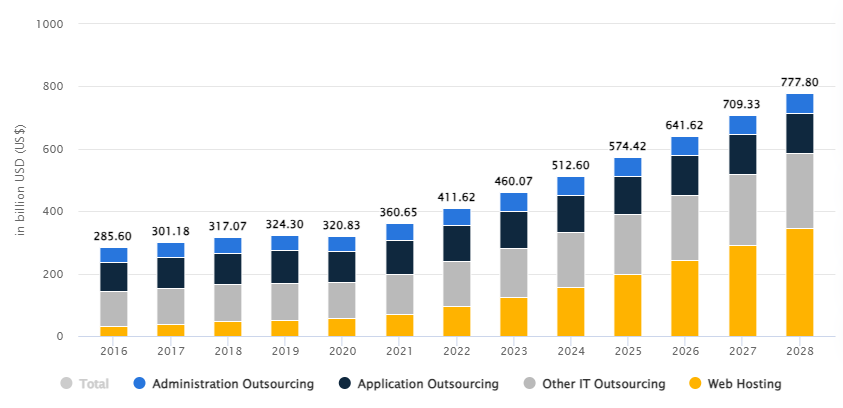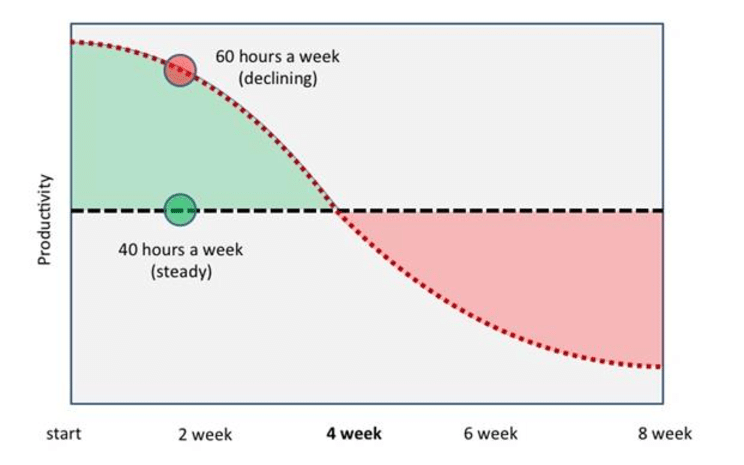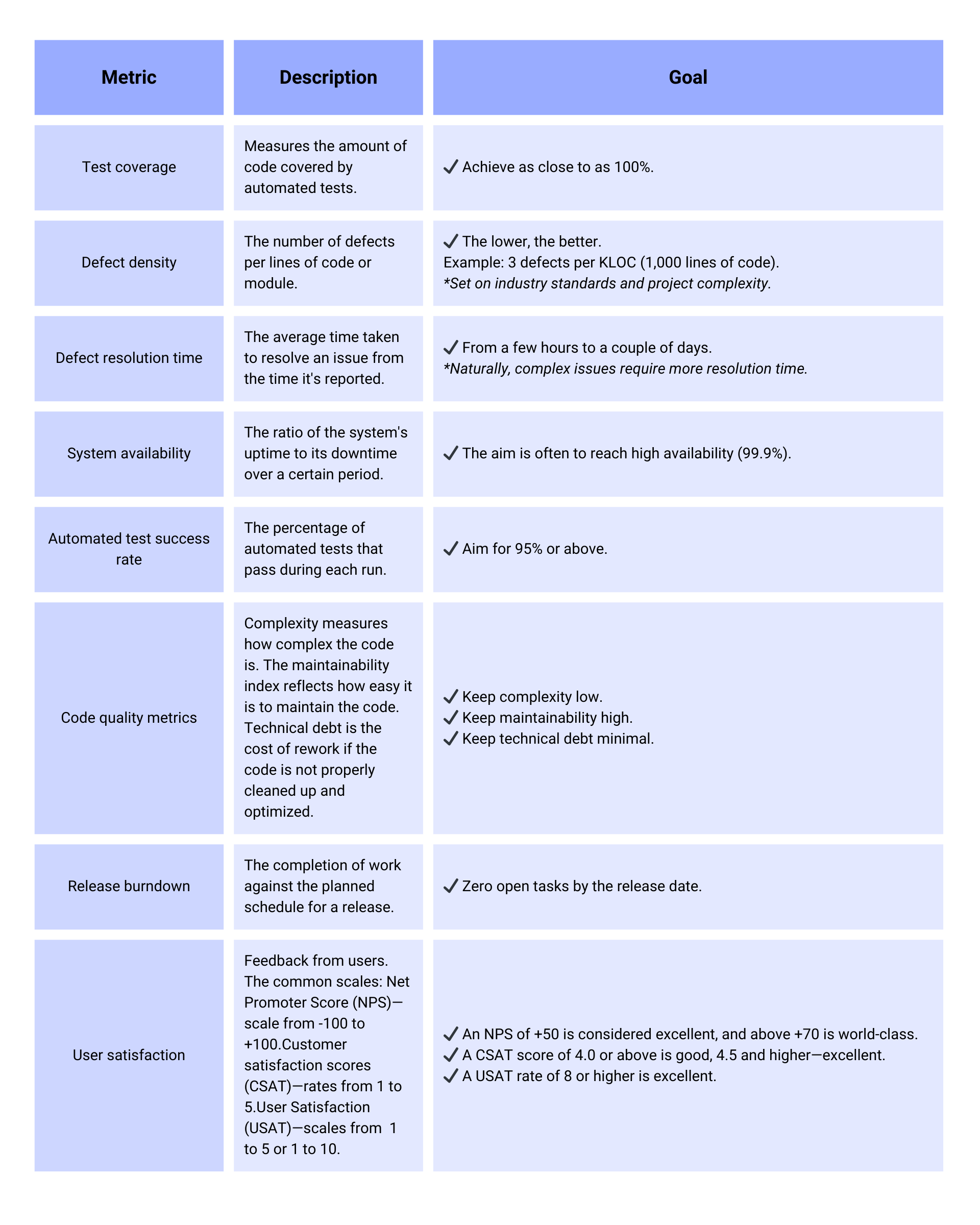Content
Statista analysts claim that revenue from IT outsourcing is steadily increasing. Over the next four years, it will demonstrate a CAGR of 10.99%, surpassing $777 billion by 2028. For comparison, in 2023, it was just over $460 billion.

Source: Statista
This suggests that outsourcing IT projects is an established practice. Statista’s report reinforces this statement. It shows that the largest share of outsourced work has been in information technology for several years.
At the same time, hiring external developers may be associated with difficulties. A common one is a lack of communication between the client and the IT team. The study from the Gitnux marketing platform indicates that 23% of IT projects fail due to a lack of understanding between stakeholders.
In this article, AdvantiSS experts offer recommendations on how to build effective partnerships with a development team. This will be particularly relevant for those who are hiring external specialists for the first time.
Effective Strategies for Seamless Collaboration with Your Tech Team
Tip #1: Avoid micromanaging your team
This approach is effective when you’re confident in the competence of the dedicated team and its alignment with your project requirements. In this case, it’s often enough to set up regular meetings to monitor progress and discuss project changes.
Getting too involved in every process can actually reduce team productivity—specialists may become nervous and lose enthusiasm. A Recruiter’s survey indicates that 59% of respondents have experienced working under a micromanager at some point in their career. Among them, 68% reported a negative impact on their morale, while 55% reported a decrease in productivity.
Tip #2: Clearly Articulate Your Requirements
Based on the Bitkom report, 75% of project errors occur during the initiation and requirements definition stage. The risk is that these errors become noticeable only once the project is implemented. This can lead to substantial budget overruns.
Given this, accurately formulating requirements at the outset of your collaboration is your top priority as a customer. After all, you are the one who has the deepest understanding of your business and the needs the future digital product should address.
Tip #3: Inform The Team About Global Business Goals
Your team should understand what features you envision in your digital solution and why they are important. This will add clarity and enhance the accuracy in meeting the established requirements.
But before you communicate goals to the team, formulate them for yourself. Use one of these effective goal-setting methodologies:
- OKR: a goal-setting system based on objectives and key results.
- SMART: a method that involves setting “specific, measurable, achievable, relevant, and time-bound” goals.
- MBO (Management by Objectives): involves aligning the individual goals of team members with the goals of the organization.
Once you define the goals, prioritize the application’s features. Start with the most crucial ones—without which the product won’t function. This means creating the Minimum Viable Product (MVP). Once the initial features are live, you can then add more features.
Only a clear understanding of the business goals will enable your team to strategically prioritize and sequentially implement new features.
Tip #4: Hire A Professional Project Manager
Many teams stick to the Agile methodology. It involves dividing the workflow into periods—sprints. At the end of each sprint, developers showcase results and receive feedback from the client. So they can correct mistakes and make necessary updates in the early stages of development.
If you’re too busy to involve yourself in those interactions, hire a Project Manager. They’ll participate in project planning, monitor possible risks, communicate scope changes to all stakeholders, ensure deliverables meet the agreed-upon standards, track expenditures, and more.
Tip #5: Set Realistic Project Deadlines
Need that feature yesterday? Very bad idea. ASAP deadlines add stress to the team. As a result—errors and indefinite deadline extensions.
What’s the solution? We recommend establishing realistic deadlines. Not only for the entire project but also for implementing individual features, i.e., for each sprint. Experts at Harvard suggest that you take your original estimate and increase it by 25%.
There’s a logical explanation for this. Your team will need to work overtime due to tight project deadlines. However, research results published on Researchgate show that the more hours a team works, the lower its productivity.

Source: Researchgate
Thus, overly tight deadlines may yield results contrary to your expectations.
Tip #6: Prioritize Product Quality
What truly requires attention is the quality of the deliverables. To estimate how well the work is done, pay attention to the following metrics:

Tip #7: Avoid Overspending And Manage The Expenses
To help your project succeed without overspending, here are several strategies for collaborating with a dedicated team:
- Define financial goals and set KPIs. Have a clear understanding of the results you want to achieve over a certain period and monitor progress. Establish measurable goals and set key performance indicators.
- Use tools to track expenses. Use basic digital solutions you have at hand (spreadsheets, Notion, etc.) or more advanced options. This will help you avoid errors.
- Create a budget and stick to it. When planning your expenses, remember: Fixing errors at early development stages is always cheaper. Also, assess the feasibility of your software before adding new features.
- Choose the optimal team model. Clarify vendor’s billing approaches: time and material (T&M), fixed price, or hourly rate. Base your decision on your project’s needs. Note that the T&M model offers more flexibility, while fixed payment ensures cost predictability.
How Will Effective Collaboration with Developers Impact Your Project Delivery?
Follow these expert recommendations, and watch how streamlined collaboration with a dedicated development team transforms your project outcomes. Here’s what you’ll gain:
- Reduced project implementation time: Missed deadlines mean lost opportunities and wasted resources. That is why timely project delivery is a priority for IT teams. Quality communication between the client and developers contributes greatly to this goal. Professional management, clear task allocation, quality feedback, and timely product testing will help avoid unnecessary bugs and complete the project on schedule.
- Increased quality of the digital solution: Forbes published alarming statistics last year, stating that only 1 out of 10 startups remain afloat after the first year of operation. Experts attribute this to poor technical implementation of digital solutions. Thorough testing, realistic deadlines, and open communication with the development team are crucial for releasing a high-quality software product.
- Cost reduction: The results of the Consortium for IT Software Quality (CISQ) research perfectly illustrate the scale of financial losses that low-quality software products can cause—more than $2.41 trillion annually across the USA. Certainly, within a single project, the losses will be significantly lower. However, effective collaboration with a development team will help avoid them and save the budget.
What's next?
The key to successfully achieving these goals is partnering with a reliable outsourcing service provider.
By turning to AdvantiSS, you will hire an entire IT team to work on your project or expand your staff with the necessary specialists.
Entrust the development and testing of your digital solution to professionals. Contact our manager to receive the consultation.





